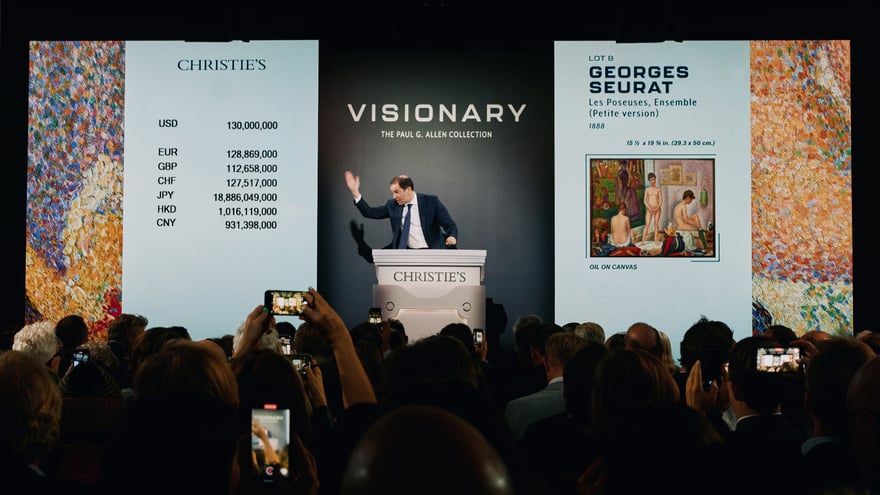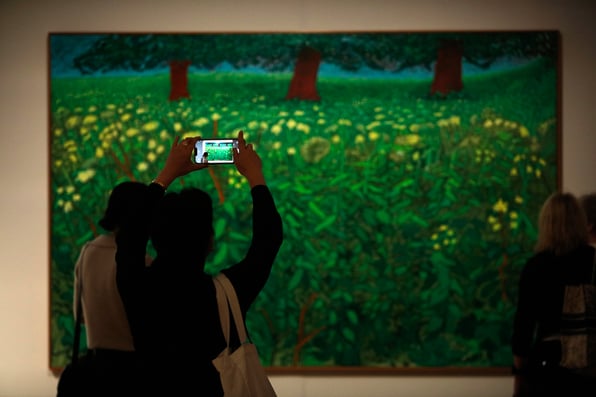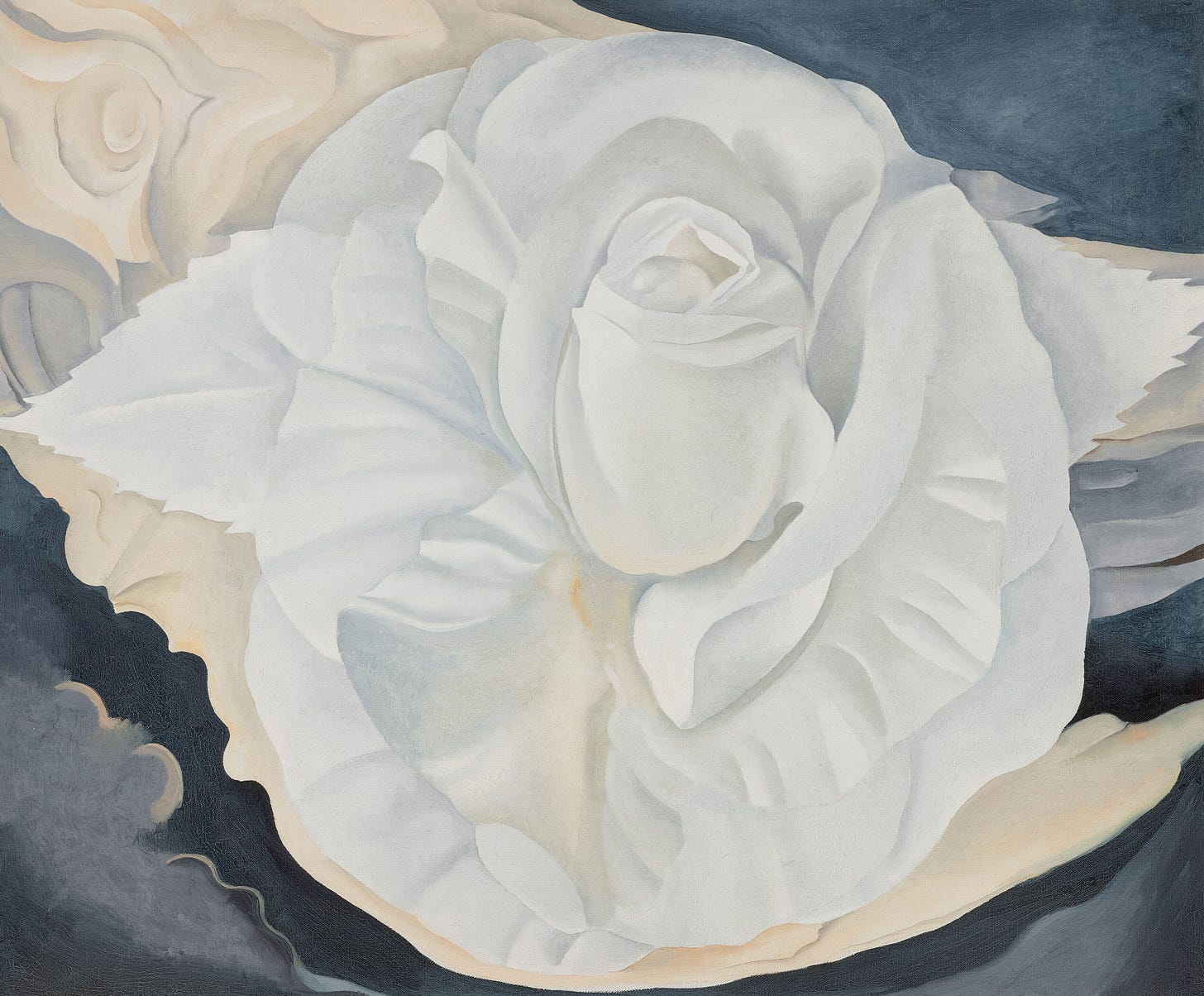Paul Allen Collection Makes $1.5 Billion
LiveArt After Action Report: The Paul G. Allen Collection (Christie’s)
Total: $1,506,386,000 with 100% sold (60/60 + 1 lot withdrawn)
Composition of Results: 52% above/ 41% within/ 7% below estimates
Aggregate Low Estimate: $1,064,900,000
Aggregate Hammer: $1,297,750,000
Hammer Ratio: 1.22
Average Lot Value: $25,106,433
The Art advisor’s prom: The crowd at Christie’s was light on collectors but deep with art market professionals, mostly art advisors but also many dealers. The broad range of artists and styles of work from different periods on offer meant a wide range of experts were there to bid—and, one suspects, many there just to be seen.
A couple of full dance cards: Despite the who’s who of the art trade, much of the bidding came from Christie’s specialists and a few key figures in the audience. One advisor bid on close to a dozen lots, winning 5-6 of them and using the same paddle for all of the purchases. That may not mean the very different works were all bound for the same collector. But it could also indicate bulk buying from places that prefer a strong provenance over curatorial vision. That could mean end users in the Gulf or Asia.
Call it a goldilocks market: The day before the Paul Allen sale, one could have easily expected to view the art market to be poised on a knife’s edge. After all, the election appeared to present a backlash to Bidenism and financial markets witnessing double-digit drops in cryptocurrencies. The next morning the world awoke to stability in American politics, a victory for Ukrainian forces in Kherson, and containment in equity markets. The Allen sale followed through with strong results. Things could change before next week but it now looks like the Fall art market is taking place in a Goldilocks moment. It’s not too hot but not too cold. Next week, we’ll see if it’s just right.
Guaranteed to succeed: Christie’s didn’t leave the sale’s success to chance. Laboring under what rivals believe to be a $1.3 billion guarantee to the Allen estate, Christie’s had locked in third-party guarantees for 36 of the 60 lots before the sale. Another three lots were announced to have guarantees at the beginning of the sale. The talk of the art world was that Christie’s had laid off risk on many lots to a single guarantor. That strategy worked out for everyone involved. Christie’s covered their guarantee to the estate with room to spare and a second sale as a margin of safety (and profit.) The guarantor(s) made money or got high quality art for solid prices.
Guaranteed not to be seen: Christie’s also took advantage of the changes in New York City’s regulations governing the auction industry announced six months ago to report only gross sales. We can no longer see from the results where guarantors received a rebate for assuming the risk on lots they acquired. There was also some aggressive chandelier bidding on lots with guarantees.
Asia was the swing money: According to Christie’s, Asian buyers acquired 12% of the lots but 25% of the sale’s value. That would translate into 7 lots with a value around $375 million. Xin Li was the most visible bidder with a roster of Asian clients. She bought the Van Gogh landscape for one client for $117 million and the Seurat for another client for $149 million. She and other Asian reps for Christie’s underbid several other works providing the swing money that made the sale successful and profitable.
Americans bought the bulk of the sale: American buyers took home half of the lots but only 30% of the value. The rest of the world had 38% of the lots and 45% of the value.
The Top Lots
All but one of the top ten lots were sold for the low estimate or close to it. Only the Seurat saw much in the way of bidding above the estimate.
There were 20 artist’s records set. The obvious stratospheric numbers for Seurat, van Gogh, Gaugin, Klimt and Cézanne—the sale set a record for having 5 works sell over $100 million (only 18 other works have auctioned at the level before)—but also records for Steichen, Signac, Sargent, Klee, Hepworth, Sidaner, Cross, Jasper Johns, Andrew Wyeth, Lucian Freud, Brueghel, Diego Rivera, Max Ernst, Sam Francis and Thomas Hart Benton.
Dynamic Lots
Performance
Of the 31 lots that saw dynamic bidding, only three had estimates in the low eight figures.
Three works by Georgia O’Keeffe saw aggressive bidding along with three by David Hockney and two by Pablo Picasso.
Allen bought Paul Gauguin’s Maternité II from 1899 in 2004 for $39.2 million. It was sold for $105.7 million.
There were strong gains for works like the Gustav Klimt landscape that Allen bought for $40.3 million in 2006 and sold for $104.5 million after 16 years.
The Monet Waterloo Bridge was acquired by Allen in 1997 for $8.2 million. It sold tonight for $64.5 million.
Allen owned one of the nine casts of Max Ernst’s bronze, The King Playing the Queen from 1944. He bought it in 1992 for $1.2 million. Another cast sold in 2002 for $2.4 million. There was a big jump in 2017 when one sold at Sotheby’s for $15.9 million. But Allen’s eclipsed them all when it resold for $24.4 million.
Gerhard Richter’s small abstract untitled squeegee painting was first auctioned in 2012 for $4.4 million. Allen bought it two years later for $9.1 million. In this sale, it only made $9.3 million after an 8 year holding period.
Pierre Bonnard’s Deux corbeilles de fruits from 1935 had been the most expensive Bonnard paintings when Paul Allen bought it for $8.5 million in 2006. The evening sale buyer paid $6.66 million 16 years later.





